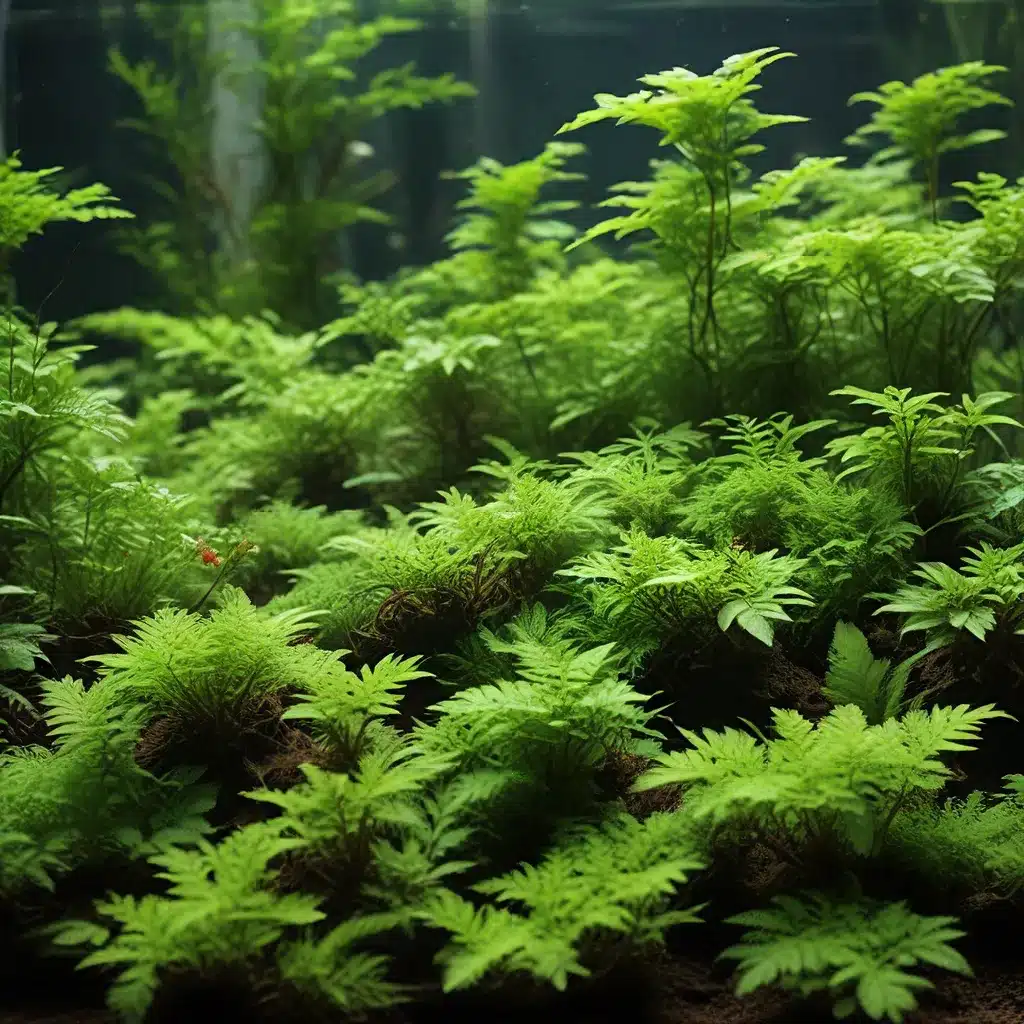
For aquarists passionate about creating vibrant, lush aquatic gardens, mastering the art of CO2 supplementation is a game-changer. This essential nutrient plays a pivotal role in the photosynthetic process that drives the growth and health of aquarium plants, making it a crucial consideration for anyone seeking to unlock the full potential of their underwater ecosystems.
The Importance of CO2 in Aquatic Photosynthesis
At the heart of the matter is the photosynthetic process, which is the driving force behind the growth and development of aquatic plants. Like their terrestrial counterparts, aquatic plants rely on photosynthesis to generate the sugars that fuel their growth and sustain their overall well-being. However, the unique conditions of the aquarium environment, where CO2 levels are often significantly lower than in natural habitats, can present a significant challenge for plant growth.
According to experts, the light requirement of aquarium plants is directly tied to the availability of CO2. In an aquarium with adequate CO2 supplementation, even demanding carpet plants like Hemianthus callitrichoides (HC) and Glossostigma elatinoides can thrive with relatively modest lighting, as they are able to efficiently harness the available light energy and convert it into the organic compounds needed for robust growth.
On the other hand, in an unsupplemented aquarium, where CO2 levels are artificially low compared to natural environments, plants often struggle to meet their photosynthetic needs, even with high-intensity lighting. This can lead to a range of issues, from stunted growth and poor coloration to the dreaded “melting” or “vaporizing” effect, where plants ultimately succumb to the detrimental process of photorespiration.
The Role of the Calvin Cycle
The importance of CO2 in aquatic plant photosynthesis cannot be overstated, as it is a crucial ingredient in the light-independent reactions, also known as the Calvin cycle. This second phase of photosynthesis is where plants convert the light energy captured in the first phase into the organic molecules, such as glucose, that directly contribute to growth and development.
Experts explain that the Calvin cycle is entirely dependent on the availability of CO2, which serves as the sole ingredient. No amount of light or other tricks can replace the need for adequate CO2 levels, as this cycle is the critical step that allows plants to fix carbon and produce the essential organic compounds required for their survival and thriving.
In natural aquatic environments, processes like organic decomposition or groundwater intrusion help to enrich the water with CO2, providing the ideal conditions for plant growth. However, these natural mechanisms are often difficult to replicate in the closed system of an aquarium, leaving many aquatic plants struggling to meet their CO2 requirements.
Optimizing Photosynthetic Efficiency with CO2 Supplementation
By supplementing CO2 in the aquarium, aquarists can effectively restore the environmental conditions that many aquatic plants have evolved to thrive in, unlocking their full growth potential. As experts explain, with adequate CO2 concentrations, aquarium plants can efficiently utilize even modest amounts of light energy, as the rate of carbon fixation in the Calvin cycle is dramatically accelerated.
This synergistic relationship between CO2 and light is particularly beneficial for aquarists seeking to cultivate vibrant, lush aquascapes. Carpet plants, such as Hemianthus callitrichoides (HC), Micranthemum tweediei (Monte Carlo), and Glossostigma elatinoides, which are prized for their ability to form dense, verdant ground covers, exhibit remarkable responses to CO2 supplementation. Even without the intense lighting they are often thought to require, these plants can thrive and spread rapidly when provided with the necessary CO2 levels.
Moreover, low-light plants, which are traditionally considered less demanding in terms of lighting requirements, can also greatly benefit from optimized CO2 concentrations. As experts explain, these species, including Anubias, Java Fern, and Cryptocoryne, are often able to use alternative carbon sources like bicarbonate, but this process is slow and inefficient. By supplementing CO2, aquarists can support these plants’ growth, coloration, and overall resilience, making them even more valuable components of a thriving aquarium ecosystem.
Implementing CO2 Supplementation
Integrating a CO2 supplementation system into an aquarium setup used to be a complex and expensive endeavor, often deterring aquarists from exploring its benefits. However, the advent of user-friendly solutions, such as the King Aquarium CO2ONE system, has made CO2 supplementation accessible to hobbyists of all skill levels.
These modern CO2 systems typically feature a CO2 source, such as a compressed gas cylinder or a DIY reactor, and a diffuser that efficiently disperses the gas into the aquarium water. As explained on Reddit, the diffuser, also known as an atomizer, creates a fine mist of CO2 bubbles that dissolve into the water column, ensuring even distribution and uptake by the plants.
Monitoring the CO2 concentration is crucial, as too much can lead to a drop in pH and potentially harm the aquarium inhabitants. Experts recommend using a simple glass drop checker, which changes color based on the dissolved CO2 levels, as the easiest and most effective way to maintain the optimal balance.
Maximizing the Benefits of CO2 Supplementation
By incorporating a well-designed CO2 supplementation system into their aquarium setup, aquarists can unlock a world of benefits for their underwater gardens. Not only does it improve the efficiency of photosynthesis, allowing plants to thrive with less intense lighting, but it also actively prevents the detrimental process of photorespiration, which can severely compromise plant health and growth.
This synergistic approach of optimizing both CO2 and light levels can lead to truly remarkable results, particularly in the cultivation of demanding carpet plants and low-light species. With the right balance, aquarists can create lush, vibrant aquascapes that showcase the full potential of their aquatic flora, captivating the senses and inspiring fellow hobbyists.
As you embark on your aquarium journey, remember that mastering the art of CO2 supplementation is a pivotal step in unlocking the true potential of your underwater sanctuary. By providing your plants with the essential nutrient they need to thrive, you’ll be well on your way to cultivating a healthy, thriving ecosystem that is both visually stunning and ecologically balanced.

